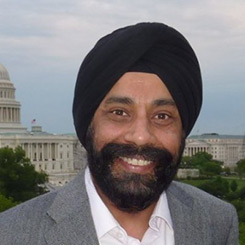Why a Unified Platform is the Missing Link
Data has become one of the most valuable assets for organizations today, especially for healthcare organizations seeking to gain insights from critical data to improve patient outcomes, optimize operations, and drive innovation. As the volume and complexity of healthcare data continue to grow, the need for robust analytics and scalable data platforms built on the Lakehouse architecture has never been more pressing.
This is the first blog in a three-part series exploring how the Lakehouse architecture is transforming healthcare analytics. In Part 1, we examine the fundamental data challenges health systems face and set the stage for understanding how a modern Lakehouse platform is uniquely positioned to solve them.
Current Challenges in Healthcare Data Management
When it comes to current challenges in healthcare data management, you’ll find that data is only growing in volume, veracity, and variety. Although “big data” is a relative term, organizations typically face several key challenges.
- Data silos: Data exists all over the organization, in different departments and various systems (on-premise and in the cloud), and many leaders may not even know the full extent of the data sets their organization holds.
- Data growth: Because of the adoption of EMR, ERP, and various systems, organizations are facing an exponential growth of data across the enterprise.
- Types of data: Most organizations typically deal with analytics for structured data today. Many have not even explored leveraging their unstructured data sets, such as videos, images, and paper, which also need to be taken into account.
- Compliance: Regulatory compliance due to HIPAA, FedRAMP, HITECH, and other regulations requires ensuring data privacy and security is in place so that it is not being used for unintentional purposes, and only those who need to know are able to access the data.
“For many healthcare organizations, the challenge isn’t simply the data volume – it’s the data fragmentation.”
– Sehej Singh, Head of Strategy and Innovation, FIDES
To illustrate this, consider this example of our client, a 300-bed hospital in the Mid-Atlantic region. When they started on their healthcare data management journey, they began to discover how many systems they had, to the extent that sometimes in meetings different stakeholders from two departments would bring conflicting data for the same use case due to multiple disparate source systems. This was one of the major catalysts for them to begin their cloud and AI journey to migrate all of their data into a unified Lakehouse platform and offer a single source of truth to stakeholders within the organization.
For insights into additional challenges, consider reading this publication on A Review of the Role and Challenges of Big Data in Healthcare Informatics and Analytics.
As data continues to grow in volume and complexity, many healthcare organizations continue struggling to turn it into actionable insights. In this three-part series, we’ll explore how a scalable, unified Lakehouse platform can transform healthcare analytics. In Part 1, we examine the core challenges healthcare providers face in managing and utilizing their data.
Stay tuned for Part 2, where we explore how scalable Lakehouse architecture empowers healthcare organizations to unlock advanced analytics and real-time decision-making. In the meantime, read our blog about Separating Hype from Reality: The Importance of Solid Data Infrastructure in the Age of AI/ML.
Let’s Build Your Healthcare Lakehouse
Healthcare analytics is evolving at a breakneck pace, and organizations that fail to keep up risk falling behind. But with so many options and considerations, choosing the right scalable data Lakehouse platform can be overwhelming.
That’s where FIDES comes in. Our team of subject matter experts is dedicated to helping healthcare organizations navigate the complexities of health IT, data management, and advanced analytics.
From evaluating your options to designing a tailored solution and implementing a scalable Lakehouse platform, we’re with you every step of the way as your trusted advisor. Let’s work together to unlock the full potential of your healthcare data and shape the future of your organization’s healthcare data analytics.
About The Authors

Ravi Singh serves as President at FIDES and is responsible for maintaining the quality of services delivered to our clients. He is a highly accomplished executive with over 30 years of experience and a successful track record in healthcare operations, strategic planning, P&L management, account management, and executive advising. Ravi is also a Board Member and President of the HIMSS Maryland Chapter.

Sehej Singh leads Strategy and Innovation for FIDES. He advises clients on digital transformation, data analytics/AI/ML, and emerging technologies. Prior to joining FIDES, Mr. Singh was a Public Sector Team Lead at Databricks supporting Federal customers and advising C-Suite/Senior leaders. He was previously a consultant at EY supporting Fortune 500s and Investment Banks with data strategy and digital transformation.
About FIDES
FIDES is a technology consulting and managed services firm specializing in digital transformation and data analytics with a primary focus on the healthcare industry. We are in the business of solving client challenges with our innovative solutions and digital transformation-driven initiatives.
At FIDES, our clients are our focal point. We constantly strive to be better and bring excellent service to our clients. Our team brings the confidence of successful IT consulting and managed services for over three decades in various markets. FIDES has the experience and expertise to be the trusted advisor and partner that your organization needs when thinking about your IT consulting, digital modernization, and managed services requirements.
Contact Information
